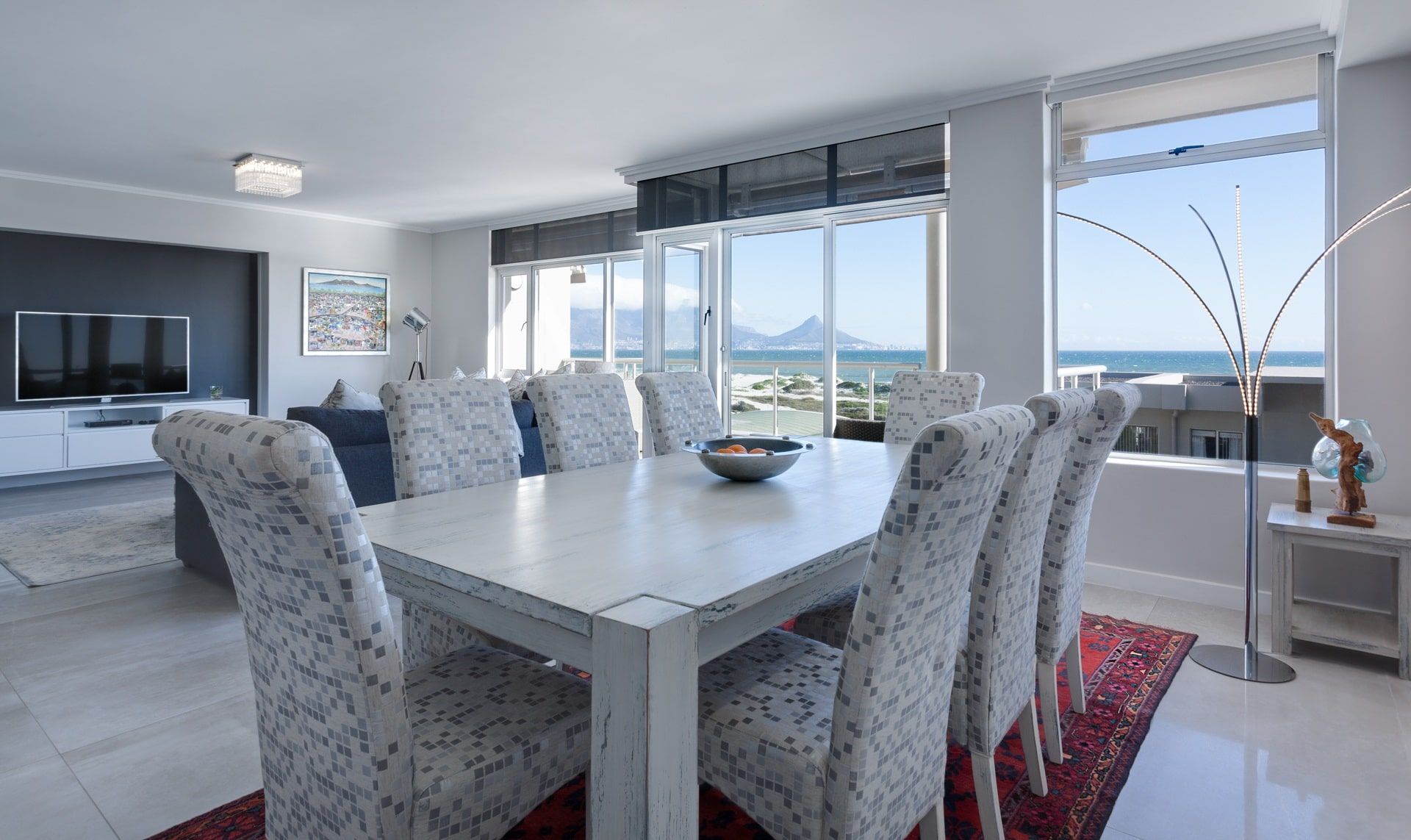Painting your furniture is a great way to modernize it and give it new life, but the paint itself isn’t the only product you should be thinking about. Primer is a really important part of any paint project, since this is what increases your paint’s durability and helps contribute to the final look.
There’s a wide range of primers on the market, but only some are ideal for working on furniture. This article will help you find the best primer for furniture by covering the following:
- 10 best primers for painting furniture
- How to pick the right primer for wood furniture
- Best way to prime furniture for a smooth finish
- Top 7 mistakes to avoid while painting furniture
Before we get into how to prime your furniture, let’s dive into the best primers available for use on your furniture. If you’ll be needing a roller brush for your project, check out the best rollers for painting furniture.
10 best primers for painting furniture
A lot of different primers are available to purchase, but only some are ideal for painting furniture projects. Here are our recommendations for the best primers for painting furniture.
1. Zinsser B-I-N Shellac-Base Primer
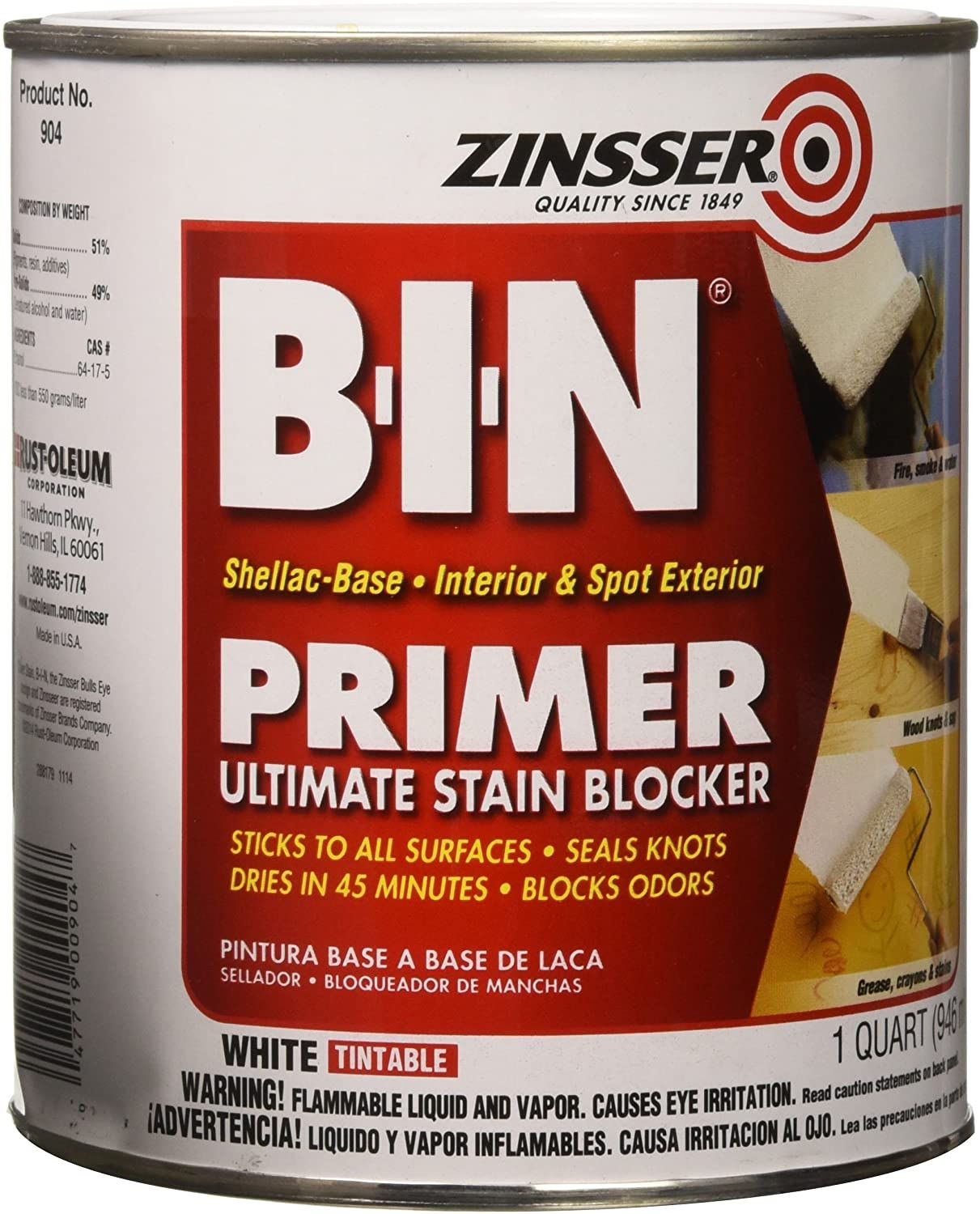
Image Credit: Amazon.ca
Size: 946 ml
Coverage: 300 sq ft per gallon
Finish: White
Type: Shellac
Best Feature: Blocks odour
For a stain-blocking primer for furniture, opt for Zinsser B-I-N Shellac-Base Primer. This primer is great for indoor and spot exterior use, and for all surfaces. It’s also able to seal knots and block odors.
2. Rust-Oleum Painter’s Touch 2X Ultra Cover Paint + Primer

Image Credit: Amazon.ca
Size: 340 g
Coverage: 16 sq ft
Finish: Glossy
Type: Oil-based
Best Feature: 2-in-1 product
If you want to save time on your furniture project, opt for the Rust-Oleum Painter’s Touch 2X Ultra Cover Paint + Primer. This 2-in-1 product will coat your furniture in an elegant, smooth finish in little time. It’s easy to use and available in a variety of colours.
3. INSL-X STIX Waterborne Bonding Primer

Image Credit: Amazon.ca
Size: 946 ml
Coverage: 300-400 sq ft per gallon
Finish: Semi-gloss
Type: Urethane acrylic
Best Feature: Versatile
INSL-X STIX Waterborne Bonding Primer is one of the best primers for laminate furniture. This primer is made specifically to bond to surfaces that are hard to coat, and will give you a smooth, level finish. It can easily be cleaned with soap and water, and has a low odour.
4. KILZ Adhesion High-Bonding Interior/Exterior Latex Primer
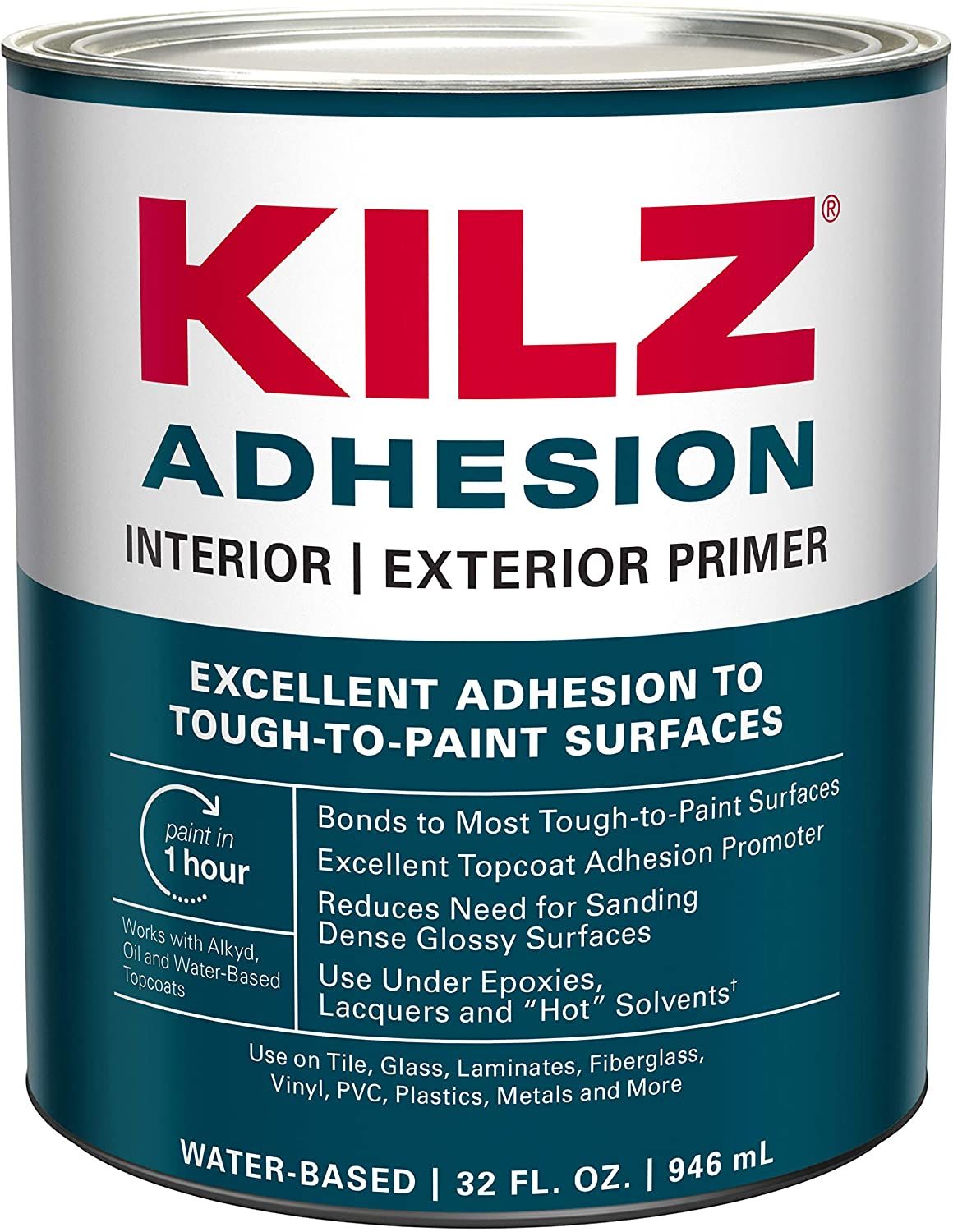
Image Credit: Amazon.ca
Size: 946 ml
Coverage: 300 sq ft per gallon
Finish: Glossy
Type: Latex
Best Feature: Made for tough-to-paint surfaces
Another great bonding primer is KILZ Adhesion High-Bonding Interior/Exterior Latex Primer. It’s made to help your topcoats stick to tough-to-paint surfaces, even those that are super-sleek. It dries in up to 30 minutes, and is ready to recoat in an hour.
5. Zinsser Bulls Eye 1-2-3 PLUS Primer
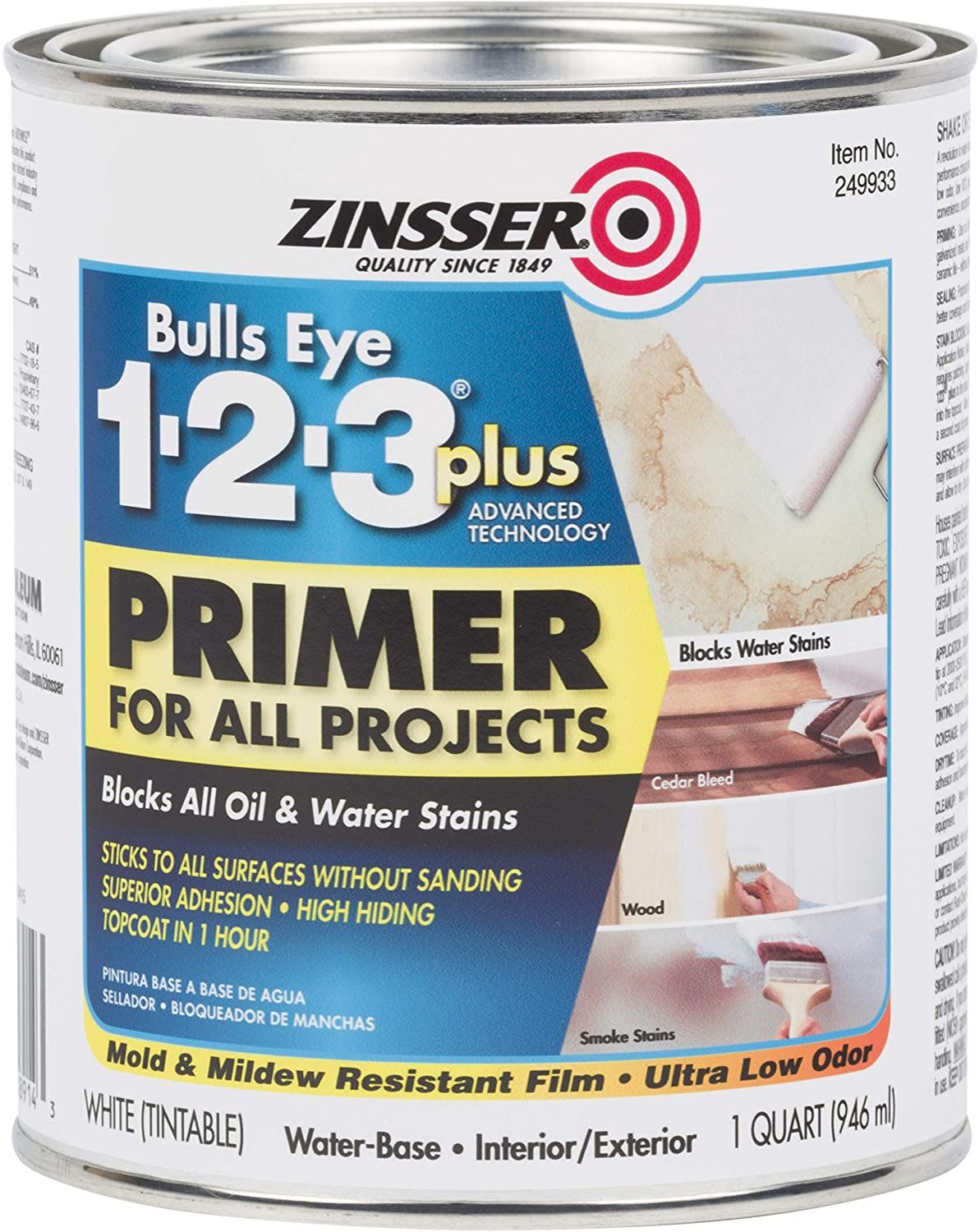
Image Credit: Amazon.ca
Size: 946 ml
Coverage: 300 sq ft per gallon
Finish: White
Type: Latex
Best Feature: Mold and mildew resistant
For the ultimate stain blocker, you need Zinsser Bulls Eye 1-2-3 PLUS Primer. This primer has the ability to block all oil and water stains on all surfaces. It also will save you time, as it doesn’t require sanding before use.
6. Rust-Oleum Stops Rust Universal Bonding Primer

Image Credit: Amazon.ca
Size: 340 g
Coverage: 16 sq ft
Finish: White
Type: Latex
Best Feature: Comfort tip
Another option for a spray paint is Rust-Oleum Stops Rust Universal Bonding Primer. Like the Painter’s Touch line, it can be used on indoor and outdoor furniture made of a variety of materials to help give it a beautiful finish. It’s also available in a variety of colours and can be used in moist or humid environments.
7. Krylon ColorMaster Paint + Primer

Image Credit: Amazon.ca
Size: 340 g
Coverage: 16 sq ft
Finish: Glossy
Type: Acrylic enamel
Best Feature: 2-in-1 product
If you need a primer for outdoor metal furniture and some new paint, consider using Krylon ColorMaster Paint + Primer. This 2-in-1 product can be used on plastic, metal, wood, and more, whether it’s indoors or outdoors. It also dries in 10 minutes, making fixing up your furniture even faster.
8. KILZ 2 All-Purpose Interior/Exterior Primer
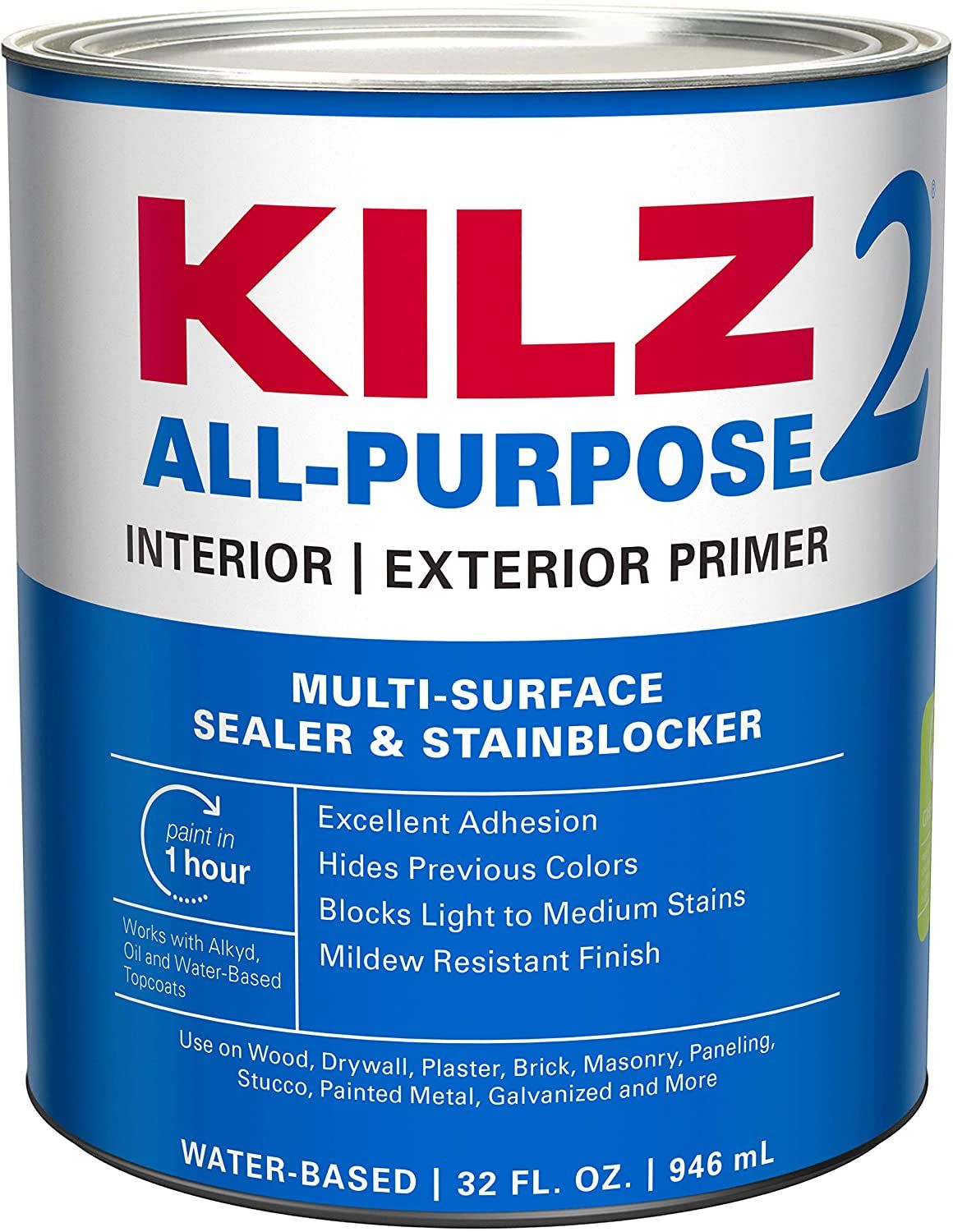
Image Credit: Amazon.ca
Size: 946 ml
Coverage: 300 sq ft per gallon
Finish: White
Type: Latex
Best Feature: Versatile
This KILZ 2 All-Purpose Interior/Exterior Primer is a great option for protecting your furniture long-term. It will help keep your finish perfect as it blocks light stains, resists mildew, and can hide previous colours. It’s easy to clean and works on a variety of surfaces.
9. Zinsser Bondz Maximum Adhesion Primer

Image Credit: Amazon.ca
Size: 946 ml
Coverage: 300 sq ft per gallon
Finish: White
Type: Latex
Best Feature: Approved for indoor and outdoor use
Also great at bonding paint to tough surfaces is Zinsser Bondz Maximum Adhesion Primer. This primer can be used on indoor and outdoor products to help strengthen your work. It can also be used with any topcoat.
10. Rust-Oleum Stops Rust Clean Metal Primer

Image Credit: Amazon.ca
Size: 946 ml
Coverage: 300 sq ft per gallon
Finish: Flat
Type: Oil-based
Best Feature: Prevents rust
Also a good choice for priming metal furniture, Rust-Oleum Stops Rust Clean Metal Primer will give your furniture new life. Not just for painting, this primer will help increase durability and protect your furniture from rust. It can be applied to bare, lightly-rusted, and previously-painted metal.
How to pick the right primer for wood furniture
Finding the right primer for your project is just as important as finding the right paint. Different varieties will have different results, so it’s important to know what you need in a primer for wood furniture, metal furniture, or laminate furniture. Below are the two things you need to consider when choosing the best primer for your furniture.
Choosing the right primer finish
A primer’s finish will impact a variety of factors, including how shiny it is and how well it works with your paint. These are the types of finishes you’ll need to choose between:
- Matte or flat: No shine; works best with most paints.
- Semi-gloss: Fairly reflective; incorporates the best of matte and glossy primers to help enhance your paint’s finish.
- Glossy: Very shiny; allows for smooth application, and enhances the finish of approved paints.
Choosing the right type of primer
The other thing to keep in mind is what type of primer you need to use. Different surfaces and conditions will determine what’s needed to offer the best coverage. Here are the main types of primers you’ll need to choose from:
- Oil-based: Incredibly versatile, stain resistant, and can withstand different weather conditions.
- Latex: Health-conscious; ideal for wood, drywall, plaster, metal, and masonry.
- Shellac: Best at sealing interior surfaces, has a fast dry time, and blocks and covers stains well.
Best way to prime furniture for a smooth finish
When setting out to paint your furniture, you want to do everything you can to ensure you get the best results. This includes knowing the best way to use primer. Follow these tips to give your furniture a smooth finish with primer.
- Sand away the old – Use sandpaper to remove any rough surfaces and old paint, if necessary. This will ensure that the new primer will properly stick to your furniture.
- Clean the surface – Use a damp cloth to remove the dust, dirt, and debris from your furniture to prevent it from appearing or affecting your paint and primer.
- Use a foam roller or brush – If you’re not using a spray primer, use a foam roller or brush to apply your primer for a super-smooth and line-free finish.
- Let dry between coats – Allow your primer to fully dry, according to the label, before applying a new coat/paint. This helps to properly build coverage.
- Sand between coats – You should also sand between coats to remove any drips or uneven texture. This will keep your furniture smooth.
- Completely cover the surface – Be sure to fully coat your furniture, without thinning the primer, to ensure you get the best appearance with your paint.
Top 7 mistakes to avoid while painting furniture
In addition to remembering everything you should do, there’s also several things you need to avoid doing in order to give your furniture the best results. Here are some common mistakes you should avoid while painting and priming your furniture.
1. Not sanding before you prime
It’s really important to sand before you begin. Sanding removes the old layers of paint and primer that could keep your new primer and paint from sticking properly to your furniture. It’s also extremely helpful for creating a rough barrier that helps the new primer/paint stick.
2. Sanding too much
On the other hand, it’s also important to not overdo it when you’re sanding. There is such a thing as “too smooth,” and it can be difficult to get the results you want without the ideal surface to apply your material to.
3. Using paper towel to clean
When cleaning, paper towel is the worst thing to use. It can leave dust and debris behind, which defeats the purpose in cleaning your furniture. Try to use a tack cloth if possible.

4. Thinning the primer
The more a primer is thinned, the less coverage it will have. Apply a fair, even amount to the entire surface of your furniture to ensure you achieve the proper amount of durability, and create the best surface for your paint to be applied to.
5. Using too much primer or paint
Also to note for both paint and primer is using too much of each. Too much primer can cause cracking, crazing, or chipping, while too much paint can cause unwanted dripping, blotches, splatters, and unevenness. To apply the perfect amount, dip your brush’s bristles ⅓ of the way into the paint and tap away the excess. If you’re using a roller, remove the excess primer/paint using a paint tray or a screen.
6. Not letting each coat dry
Applying a fresh coat of paint or primer before whatever has been previously applied has dried can actually make things worse. Allowing each coat to fully dry helps to ensure everything stays smooth and even, and won’t damage the previous coat.
7. Not sanding between coats
It is highly recommended to sand between coats once they’ve dried, as this will help to remove any drips or blotches. Building up your paint and primer on top of mishaps can result in uneven coverage and difficulty smoothing out your paint later on.
Now that you know everything about finding and using a primer on your furniture, it’s time to get started on your project. If you think you have a paint project you’d prefer to hire a professional for, the City Painters are here to help. Contact us here, or give us a call for a free quote.
